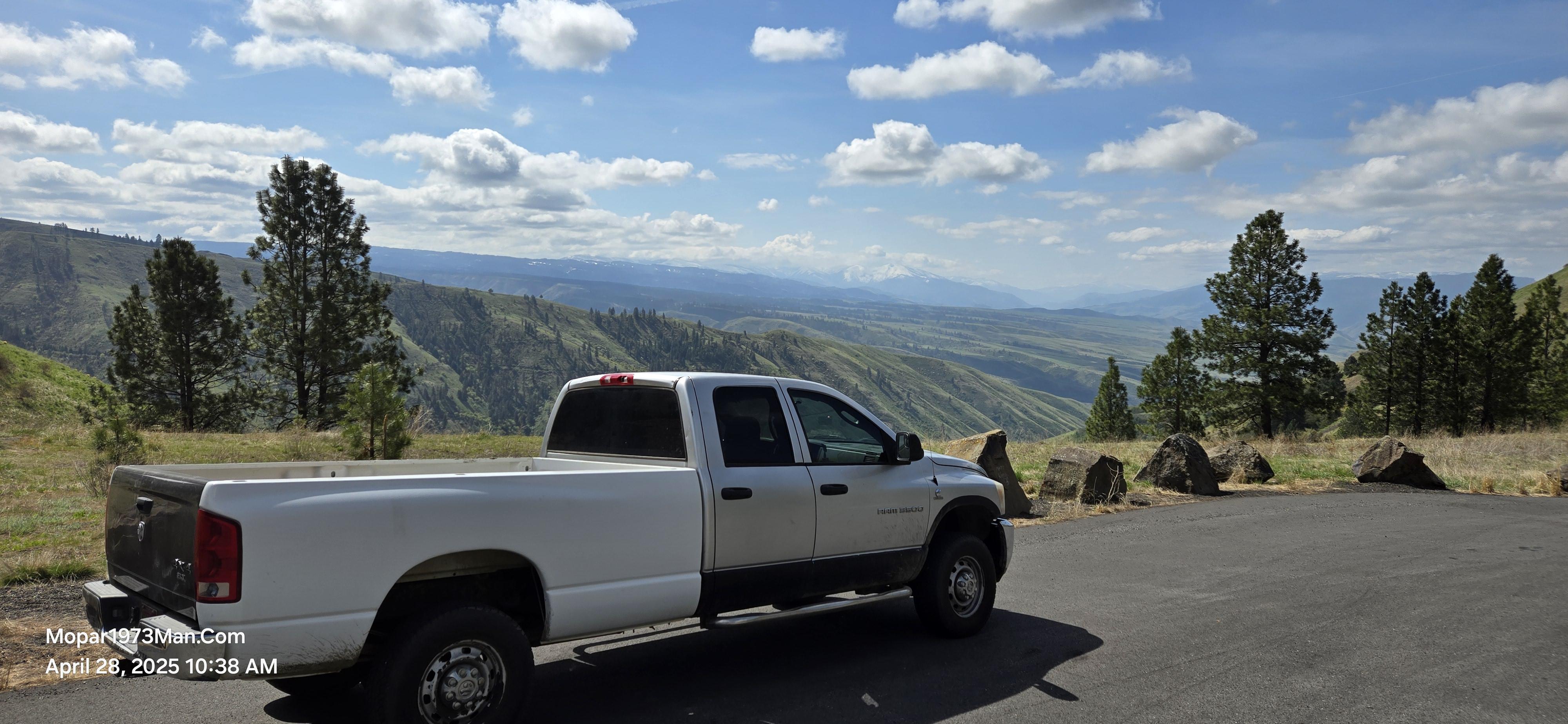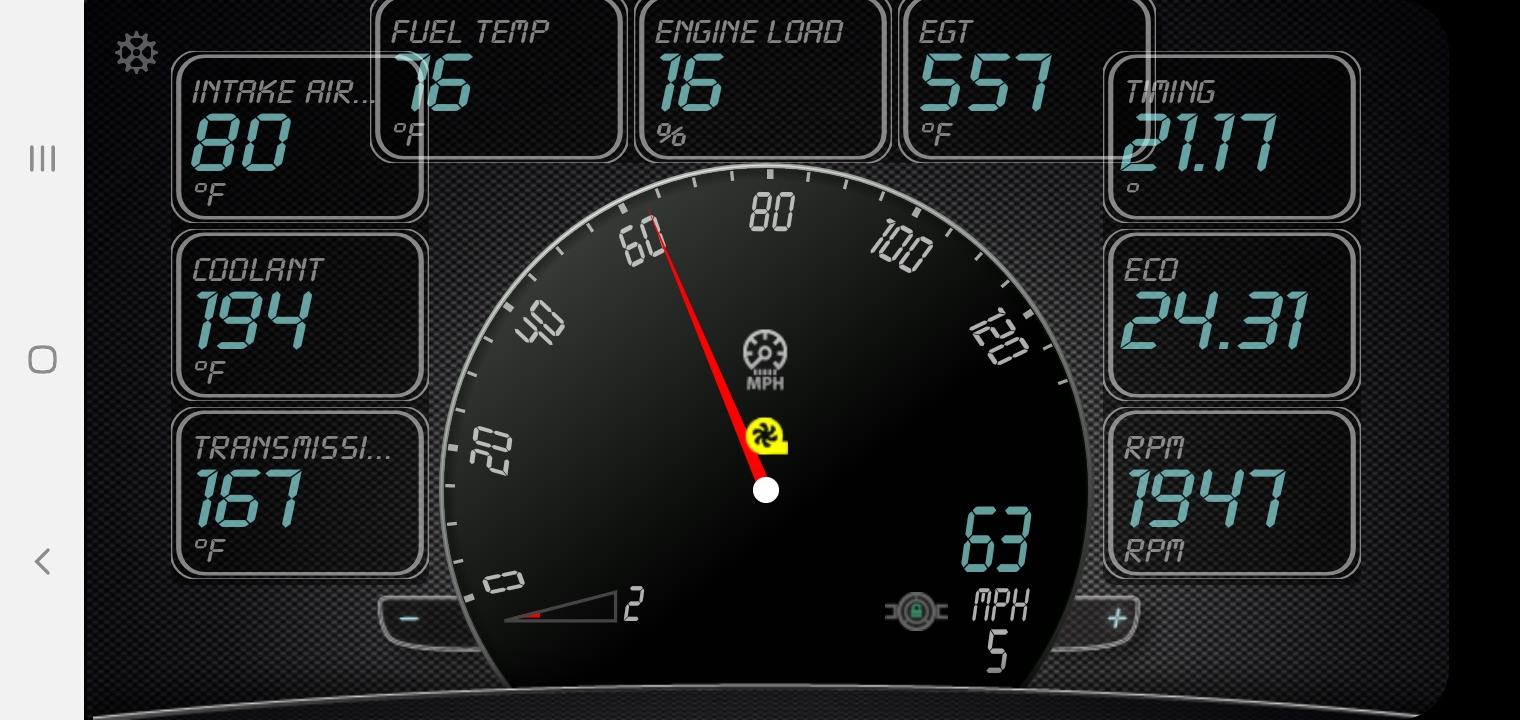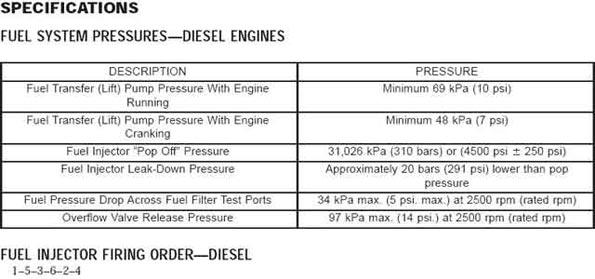
Everything posted by Mopar1973Man
-
High EGTs when towing
Sorry that is due to the server move...
-
Quadzilla Timing - wanna share some info.
That was my plan. I wanted to get it on the forum discuss it and then get it all put into an article. That way you can continue asking questions and I can try to add more to this topic and grow the article up more. There is a method to my madness...
-
Quadzilla Timing - wanna share some info.
Just 7°F outside. Period... I had to add just a touch more because it was so cold. Highway was frosty and freezing fog off and on.
-
From Edge EZ to Quadzilla is there anything I need to know?
Your right... Boost fooler is the electronic side in the tuner box that keeps the ECM from seeing actual boost value. The boost elbow is in the turbo.
-
High EGTs when towing
Stock Injectors and Edge Comp on 5x5 I would pull at least 32 to 35 PSI on HX35W turbo. Even on my Edge Comp on 5x5 and RV275 injectors I was tipping over 40 PSI. Quadzilla and +150 HP injectors I'm now at 49 PSI. I'm starting to think his boost fooler isn't working correctly. Even with my Quadzilla removed and no boost fooler... I can still make a mere 24 PSI of boost with +150 HP injectors.
-
High EGTs when towing
OK... Just to point out something. Boost leaks have to be HUGE to be seen in EGT's. I can unplug my wastegate hose leave it open and pull 1 manifold bolt out. I can still make 43 PSI out of 49 PSI. EGT only slightly rises (+50°F to +100°F) but you can audibly hear the air blowing out the holes. Minor leaks that weep are not going to create a EGT problem. I guess I'm going to have to get out a video camera and make a video. Boost leaks have to be HUGE to create EGT issues.
-
High EGTs when towing
Need to get headed toward real tuner and control timing directly like Quadzilla. I have got bigger injectors and running wire tap and towing RV in desert temps in Arizona and never crossed over 1,200*F. Timing has a big impact in EGT's. Now I've got to ask do you have oversized tires? Common issue where people using oversized tires and 3.55 gears it will reduce your final ratio too low adding EGT's and engine load to the engine. 32 inch tires are the largest you can run on 3.55 gears. If you wanting to keep your oversized tire I suggest 4.10 gears.
-
Quadzilla Timing - wanna share some info.
I just made the run to Council, ID to go vote. Just with the morning temperature at +7°F I added more timing. Bumped it back up to (cruise timing) 21° at 2,000 RPM. This dropped my engine oil temp another -5°F and 163°F oil temperature even after climbed a 6% grade. Intake temperature was 75 to 87°F (Reaching that low point) Engine Oil Temperature 160°F to 168°F even after 54 miles. Fuel Temperature was 63°F to 77°F Engine Load was 16 to 22% Timing was 21° at 2,000 RPM Coolant was 188°F to 195°F Need to get my winter fronts installed...
-
From Edge EZ to Quadzilla is there anything I need to know?
Just buy a piece of silicone boost hose and extend it as much as needed. Length has no impact on the wastegate hose.
-
Installing air springs, hose question.
Just need to have the controller so when the switch is set for left your looking at left side pressures. Then flip to the right side now the gauge sees the right side pressures. So a singlwe switch and single gauge is fine. This allows for offset pressure for like your heavy one side you can adjust for the offset left and right weights then while you roll.
-
Installing air springs, hose question.
Late to the conversation but... If I was to upgrade to air bag I would do a in cab controller that is separated left and right controls. I had a job years ago where I was going to install a system like this then @MoparMom went into the hospital with kidney failure. I lost the job... There is in cab controllers for air bags so you can do everything in cab and not have ot adjust left and right fighting with a tire gauge and air hose.
-
DRB III Emulator
The only thing I can think off is keep an eye out for a used DRBIII tool on eBay. I've seen a few members here pick them up for like $300 bucks. Super cheap and working.
-
Everyone post a picture of your truck!
-
Code questions
Basically the P1698 and the P1694 are both CCD Network errors. Need to check the CCD network voltage for 2.49 and 2.51 volts when the computer are not talking. Pin 3 and 11 to ground. Reasons for failure... Bus Shorted to Battery Bus Shorted to 5 Volts Bus Shorted to Ground Bus (+) Shorted to Bus (–) Bus (–) and Bus (+) Open Bus (+) Open Bus (–) Open No Bus Bias Bus Bias Level Too High Bus Bias Level Too Low No Bus Termination Not Receiving Bus Messages Correctly REMEMBER the instrument cluster is what sets the bus bias voltage.
-
Heater core
Should of pull the HVAC box completely and cleaned out all the old anti-freeze and lubed all the door pivots and the stepper motor too. Evaporator for the A/C typically looks like crap by the time a heater core fails.
-
Turn signals not working
My trip to Arizona I had a bad connection on the trailer that did the same thing the left turn signal wouldn't work correctly at all. After unhooking thetrailer it work correctly. So I would look at your trailer first before the multifunction switch.
-
From Edge EZ to Quadzilla is there anything I need to know?
That sucked... I remember you mentioning that... Mine I've never got to adjust to the wastegate really. It still hits 45 to 49 PSI regardless of my setting so far.
-
Grid heater bypass question.
Just a to point out something that happened to me... I've got a permanent magnet train generator on my pelton wheel generator. Now I using a full wave rectifier on both outputs. I've got just mere 15 Amp fuse in the line. Now I wanted to control the generator with my house inverter has got a tiny little 5A relay. Using the 12V battery system and Ford Starter Solenoid. Now the little inverter relay controlled the Ford Solenoid (constant duty). This was just fine. First operation of it it clapped closed and the voltage started to rise like it should hit it charged state. Inverter dropped the relay and the Ford Solenoid opened. The generator had enough energy and not enough air gap it continued to arc and burn. It burned up the Ford solenoid in mere seconds smoking. Then back fed the inverter and burned up the control relay as well. For what ever reason that solenoid doesn't have enough air gap and the arc continues internally. Might be what happened here hence why the burnt smell.
-
Heater output issue
That is correct for a true empty system but since most folks don't get the last bit of water out of the system then its about 5.0 to 5.5 gallons typically on a refill. I just dump the first gallon straight to make up for that water left from a block flush. I know the feeling well.
-
Quadzilla Timing - wanna share some info.
Most of this article is from the ASTM testing labs document. In a nutshell here is what my local fuel do when I checked the specs. The dark green is the summer fuel and then winterized fuel up here is the light green. The point at which the two lines of the same color cross is the cetane number. (Cennex Fuel) Now just to really blow your mind now that cetane is being discussed true racing of diesel you need high cetane fuels. You need a fuel that is super quick to ignite and completely burn off at 4,000 RPM's. This is why you see all the drag truck rolling serious coal. They must dump huge amount of this high cetane fuel to make up for the loss of BTU energy. Same concept with gasoline racing they switch from gasoline to alcohol because the fuel has to be quick but alcohol has way less BTU's vs gasoline. Hence why the long duration cams and big carbs. Get that fuel and air mixture jammed in the cylinder. So during the winter up here the fuel BTU's drop nearly 10k BTU's. Just to point out that with high cetane fuel I'm now 5% higher in engine load to just travel the same highway at the same 65 MPH. This point out the reduction of BTU's. Back to the timing part... So now with winter coming and colder weather. The engine block temperature will be the same for the most part. Thermal efficiency you want your coolant temperature high. 190*F is a stock thermostat but even a 6.7L Cummins has a 200*F option that will fit our 5.9L. High your coolant temperature the better thermal efficiency between the cylinder and the coolant jacket. If you coolant is too cold then the flame energy is absorbed by the coolant jacket by a certain percentage. With high coolant jacket temps part of this heat energy is returned to the cylinder to heat the air and get the fuel to convert from liquid to vapor (flash point) to BANG! (ignition). Here is where the winter fronts and the high temp thermostat comes in. Now your artificially creating a mini-summer like condition with blocking out the intercooler and using hotter thermostat. Now with subzero temperatures the extra heat will create slightly faster ignition of the fuel hence why again I would choose to limit my advancement. REMEMBER - It takes heat to warm the diesel fuel to 150°F to 180°F the flash point of the fuel, make the fuel turn to vapor and go bang. Larger droplets take more heat and long duration to ignite. Low pop pressure is also negative effect being once your below 280 bar or so the spray pattern degrades and the droplet get bigger. Taking longer to burn. COLD AIR IS NOT A DAILY DRIVER FRIEND! This one reason why I will continue to point out optimal temperature IAT is about 100°F to 140°F this is plenty warm enough for getting even low cetane to go bang in a quick order. So now your seeing what I do to ensure good winter time operation with the least amount of loss. Just to point out that stock ECM tune below 80°F IAT temp the ECM advances 4° worth of timing. Another reason for the drop of MPG during the winter. Also take note I RETARDED timing for the winter because of high cetane! Timing wise on the Quadzilla its about getting to the lowest ENGINE LOAD possible for all the RPM band. Another way to pick it apart. Work with each RPM band separate. So if your starting out with 1.5k RPM band set it for 13° and then go out and see how setting your cruise in top gear at 1.5k RPM. Now measure your engine load in cruise state. (Remember cruise timing is ADDED on top of the 13°.) Then go up to 2k band and set it for 17° and test that the same way. Between cruise timing and the max timing you can create exactly what your truck wants for timing. Not many need to go to 2,5k RPM band for cruise state but I'm one that does being with 30 inch tires and final ratio at 3.69:1 that puts me at 2.5k RPM at 82 MPH. Even again with high RPM's travelling down the interstate 84 in Boise. I can safely twist the 2.5k RPM and still rock 19 to 21 MPG. I've done it many times. Winter or summer. Tough part is getting it to be able to reach a cruise state at that high but I've actually done it a few times. I know I've got a few screenshots of cruising at 80 MPH and still getting below 25% engine load then stepping up to 25° to 26° cruise timing. Now just to show you the basic concept of compression ignition using a fire piston. This is exactly what our diesel engines do compress air to get enough heat to ignite fuel.
-
Rough Idle & Bucking After Installing Head Studs, Turbo and Injectors
Yup he's got you on the right direction so far. You do realized after just about 20k to 30k miles those injectors might drop pop pressure again and be below minimum pop? Dodge FSM minimums are 293 bar. 4500 PSI - 250 PSI = 4250 PSI now convert to bar which turns out 293.0272 bar. Going to have a short life span with those +75 HP. Even stock injectors are 310 bar and the only reason why shop pop low is to increase fuel flow but makes the droplet bigger and tends to create more smoke. Hence why I had my 7 x 0.010 popped at 320 bar which is still below the Dodge FSM spec. 4500 PSI + 250 PSI = 4750 PSI convert to bat and that is 327.501 bar. Take a lot longer before I fall under 293 bar. So in a nutshell... Dodge FSM specs are 293 bar Minimum, Set pop is 310 bar. Then maximum is 327 bar. Closer you are to 300 bar more fuel but smokey. Closer you are to 320 bar the cleaner exhaust but less fuel. Even with my set up and Quadzilla I can get it to pull the tires loose on my truck with just CANBus fuel now. No wire tap.
-
Rough idle
Injection lines come out in groups of 3. Front batch which is 1, 2, and 4. Then the rear set is 3, 5, and 6. No need to even mess with the line clamps.
-
My Turbo has reached it's end-of-life. --> What are my options?
Some where around 200k I fed my turbo a hose clamp and destroyed the compressor wheel had it rebuilt. Ran it till I got the HX35/40 hybrid rebuild that and still going on that turbo. 422k miles and still spooling great.
-
From Edge EZ to Quadzilla is there anything I need to know?
Exactly what I got. Your old Edge EZ boost fooler you can keep its good for 35 to 38 PSI of boost with the Quadzilla. More than enough for what you doing.
-
Quadzilla Timing - wanna share some info.
The simplest way to look at timing. The more your retard timing under power the quicker the turbo will spool. This is due to the fact the fuel is lit off late so the burning flame front is more so pushing out the exhaust manifold and spinning the turbine up. Now if you advance the timing the flame front is started in the cylinder as the piston is still coming up. Giving more time for the fuel to heat in the cylinder turning to vapor, to BANG! Being more of the flame front is consumed in the cylinder the cylinder walls typically get a bit warmer pushing the oil temp upward. Most of the flame is spent and this is why with advanced timing the EGT's fall. It's a balance between good retardation that gives that good down low spool then enough advancement to consume all your fuel before getting the exhaust stroke. Going in deep now... I use engine load and engine oil temperature to manage timing placement. Like if I over advance my oil temp will rise upward to about 190°F to 195°F but like now with my knowledge my oil temp floats around 170°F. Even while under WOT and high EGT's (1,200 to 1,400°F) this give me more buffer room for standing on it longer before oil temp cannot protect the pistons. When I unwind again and come back to cruise state I can see the slight rise in oil temp but in a few miles it will settle back to ~170°F roughly. Now as for timing if your going the wrong direction the engine load will RISE. If it does rise then you need to reverse your timing. If your advancing too much the engine load will rise due to what know as negative torque. This is when the piston is still travelling towards TDC and you inject too early the fuel heats, vaporizes, then starts to burn before TDC occurs and now the expanding fuel is push again the upward moving piston making "negative torque" till it breaks over TDC. This does show up as a higher engine load and is counter productive. If the timing is too retarded the injection event, vapor to bang occurs too late and the expanding gases are not build pressure enough to do the work. This also shows as high engine loads but... There is an audible difference retarded timing that is too deep will be like no injection knock at all it dead quiet. Over advanced will be tinny and fairly louder injection knock. Way too far advanced the engine will start to buck and miss. This occurred to me in the fall of the year. This is due to the fact cetane went UP. Fuel ignition quality went up and requires LESS advancement. This why I was shifting downward -2° across the board. Now that I'm down to winterized fuel with a start for 13° at 1.5k RPM its down low it will dig in and pull like a crazed mule. Stock ECM with IAT signal when the IAT drops below 80°F it adds like a full +3° to +4° hence why stock ECM software get poor MPG through the winter. As you seen I RETARDED my timing as cetane went up, not ADVANCED! So all you with a Quadzilla Adrenaline don't bother trying to figure in IAT temps alone. Figure against your load, speed, cetane of fuel your using, etc. Colder IAT temps don't help MPG at all. Colder the air becomes as winter sets in for me I'll have to advance again. (Hua?!) Yup. Being cetane rose during the warm weather it ignites super easy now it over advanced. But now have super cold day like -20°F to -40*F outside the IAT will drop to about +20°F for my truck at that point I'll have to advance the timing again (+1° across the board) slightly because I need more time to heat the fuel, to get it to vapor, then go bang! Keep in mind the higher cetane is lower the BTU's per gallon. As you see I'm based more about cetane and the conditions I run in. It more about matching timing to cetane and it requirements than IAT as a solo value. Colder the air becomes in the cylinder the more timing you'll need... Then warmer the air becomes the less timing you'll need vs. cetane of your fuel. Too cold of air will retard the ignition timing. This why some of us use winter fronts to block out the super cold air. REMEMBER! - More cetane booster or anti-gel product you use RETARD even more! As cetane rises the ignition will occur quicker. Again higher cetane is LOWER BTU's! Less power per gallon of fuel. Like my summer tune I can float 23° at 2k RPM's. Now in this stage of winter with temps between +20°F and 40°F with Winterized #2 Diesel I came down to 19° to 20° at 2k cruise state. Get down into minus weather I'll most likely add +1° across the board. Just remember you trying to HEAT the diesel fuel to flash point at the right time as the piston is just about ready to break over TDC and be fully expanding gases pushing on the piston with little flame front left on the exhaust stroke. (Reduced EGT's and maximize MPG!) My special condition. Being I'm using 7 x 0.010 injectors popped at 320 bar. There is a bit of retarding in the injectors being the VP44 needs slightly more pressure to open the injectors. (4,500 @ 310 bar vs. 4,640 @ 320 bar) about a 1° retarded. Few things... Bigger than stock injectors will require some advancement to timing. Injectors that are wore out typically will be advanced already being they open at a much lower pressure. High cetane is actually quicker to ignite but lower in BTU's per gallon. Should retard timing when using high cetane. Higher than 310 bar injector pop pressure will retard timing, dropping below 293 bar will advance timing but make the fuel droplets bigger.






